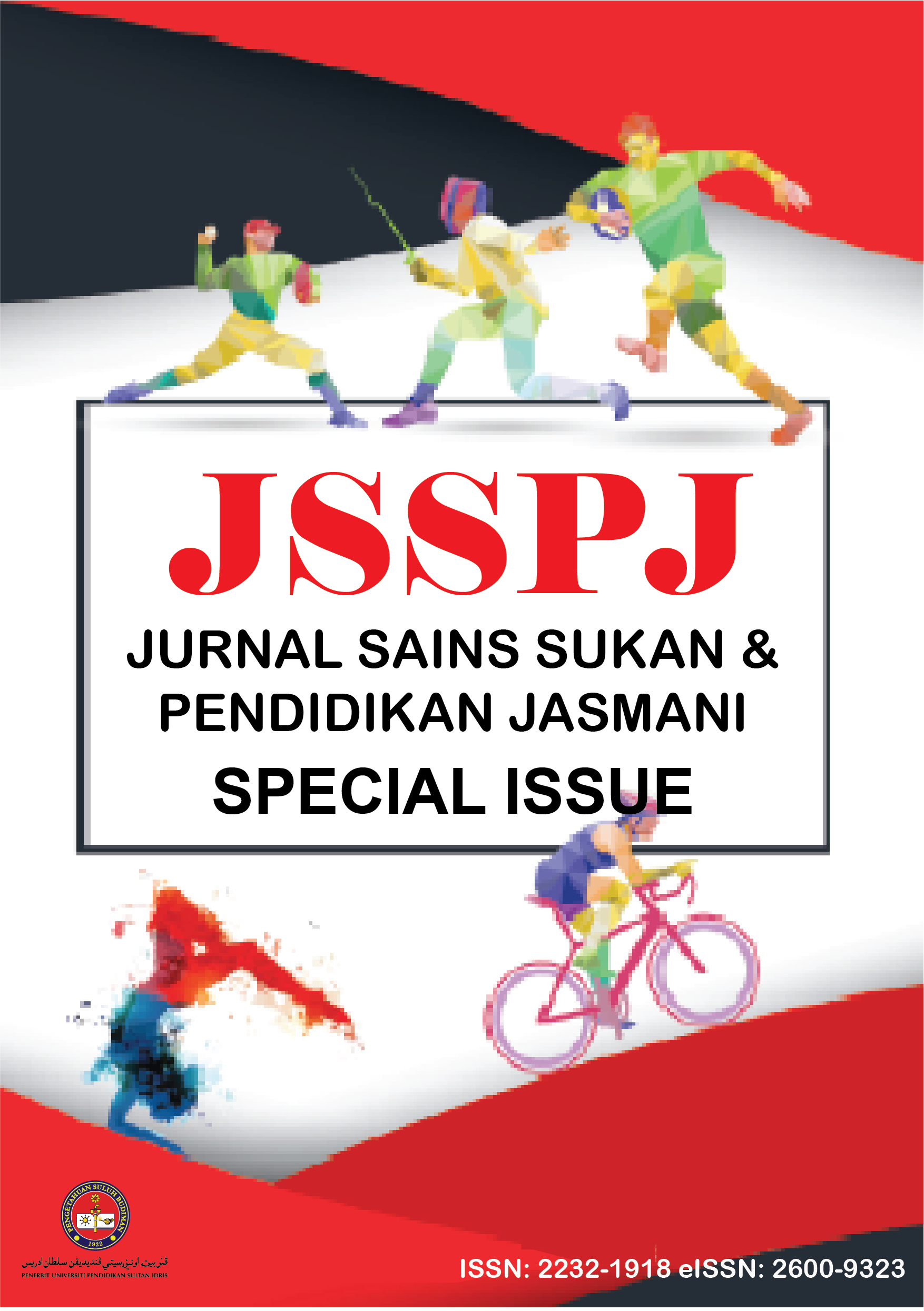The effectiveness of the model of "combining wushu morality, skill, interest and physical fitness" in wushu teaching in primary schools
DOI:
https://doi.org/10.37134/jsspj.vol13.sp.17.2024Keywords:
Wushu Teaching Model, , Skill, Interest and Physical Fitness, Wushu Teaching in Primary SchoolsAbstract
The purpose of this study is to evaluate the effectiveness of the wushu teaching model of "combining wushu morality, skill, interest, and physical fitness" in primary education. In this study, a randomized controlled experimental design was used, which selects 100 fourth-grade students from a primary school in Hebei, China, and randomly divides them into an experimental group and a control group, with 50 students in each group. The experimental group adopted the teaching model of "combining wushu morality, skill, interest and physical fitness", while the control group adopted the traditional teaching model of "basic skills + routines". The teaching experiment lasted for 12 weeks, twice a week, 40 minutes each time. The results of the experiment showed that the scores of the students in the experimental group were significantly higher than those of the control group in the aspects of wushu morality, fighting skills, learning interest and physical fitness (P<0.05). The specific manifestations are as follows: the experimental group's scores in the aspects of wushu morality, such as respect for others, fair play and teamwork, were significantly improved; the progress in boxing, footwork and kicking skills was significantly better than that of the control group; the students' interest in learning was significantly enhanced in the aspects of novelty perception, challenge perception, attention and exploration; and the students' indicators in the aspects of physical qualities, such as strength, endurance, speed and coordination, were significantly better than those of the control group. The teaching model of "combining wushu morality, skill, interest, and physical fitness" has shown remarkable results in primary school wushu education, which not only improves the students' wushu morality and fighting skills, but also significantly stimulates the students' learning interest and physical fitness quality.
Downloads
References
Bowman, P. (2019). Making martial arts history matter. In Martial Arts in Asia (pp. 35-53). Routledge.
Bai, X. (2018). Creation and empirical research of "Kung Fu Panda" exercises [Master dissertation, Shanghai University of Sport].
Chai, G. (2021). Theoretical construction and empirical research on the "integration of combat and practice" teaching model in compulsory education Wushu [Doctoral dissertation, East China Normal University]. https://doi.org/10.27149/d.cnki.ghdsu.2021.002566
Cai, C. (2019). Curriculum design and empirical research of Wing Chun in primary schools [Master dissertation, Shanghai University of Sport]. https://doi.org/10.27315/d.cnki.gstyx.2019.000057
Dai, H. (2020). Empirical research on the application of micro-lectures in primary school Wushu teaching [Master dissertation, Wuhan Sports University]. https://doi.org/10.27384/d.cnki.gwhtc.2020.000362
Ireneusz, C., & Igor, C. (2022). Relationships between physical fitness and wrestling-specific fitness in freestyle wrestlers. Polish Journal of Sport and Tourism, 29(4), 15-20.
Lafuente, J. C., Zubiaur, M., & Gutiérrez-García, C. (2021). Effects of martial arts and combat sports training on anger and aggression: A systematic review. Aggression and Violent Behavior, 58, 101611.
Li, X. (2023). Analysis on the application effect of continuous equal length contraction in Wushu special sensitive quality teaching. Chinese Martial Arts, (04), 113-115.
Liu, W. (2020). Promote the reform of Wushu education system through the reform of Wushu professional and technical education. Sports Science, 40(12), 83-93.
Li, G. (2019). Research on the application of "game" teaching method in "Level One" Wushu teaching [Master dissertation, Jiangxi Science & Technology Normal University]. https://doi.org/10.27751/d.cnki.gjxkj.2019.000177
Muhajir, A. (2022). Inclusion of pluralism character education in the Islamic modern boarding schools during the pandemic era. Journal of Social Studies Education Research, 13(2), 196-220.
Rassovsky, Y., Harwood, A., Zagoory-Sharon, O., et al. (2019). Martial arts increase oxytocin production. Scientific Reports, 9(1), 12980.
Weiwu, Y., Shihong, L., Shuaibing, L., et al. (2022). Application of artificial intelligence technology in martial arts education governance. Discrete Dynamics in Nature and Society.
Wu, Q., & Qu, G. (2021). —— Take the Sanda course in Jimo District of Qingdao as an example. In Summary of papers of 2021 National Wushu Education and Health Conference and Ethnic Traditional Sports Education on Campus Seminar (II).
Wang, W. (2021). Empirical research on improving the effectiveness of Wushu teaching in primary schools based on the perspective of "flipped classroom" [Master dissertation, East China Jiaotong University]. https://doi.org/10.27147/d.cnki.ghdju.2021.000424
Zhu, J. (2021). Research on the teaching practice of Songxi Neijiaquan in primary schools based on the Chinese health physical education curriculum model [Master dissertation, China West Normal University]. https://doi.org/10.27859/d.cnki.gxhsf.2021.000329
Zheng, X. (2021). Practical review and promotion strategies for the development of Wushu in primary schools in Hongshan District, Wuhan, under the background of "integration of sports and education" [Master dissertation, Wuhan Sports University]. https://doi.org/10.27384/d.cnki.gwhtc.2021.000038
Downloads
Published
How to Cite
Issue
Section
License
Copyright (c) 2024 Yazhou Song, Mohamad Nizam Mohamed Shapie

This work is licensed under a Creative Commons Attribution-NonCommercial-ShareAlike 4.0 International License.





